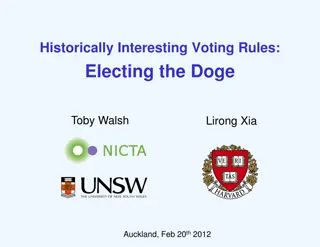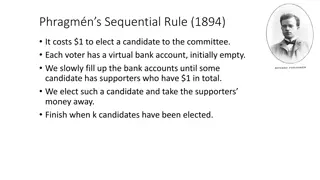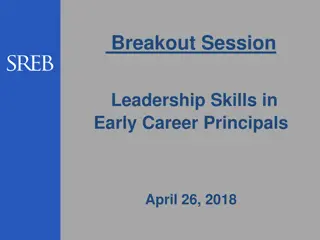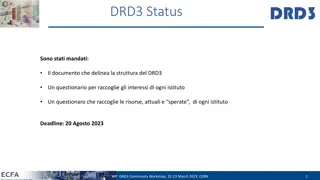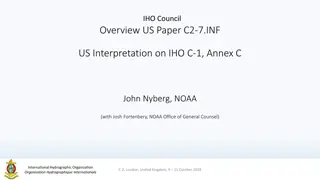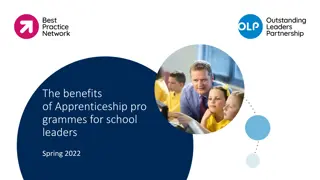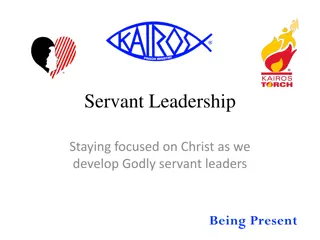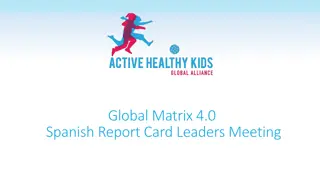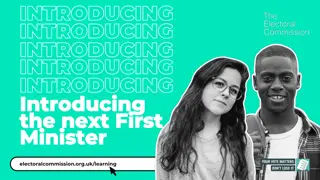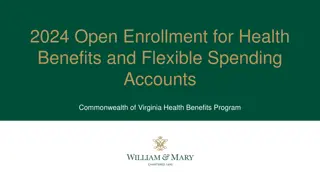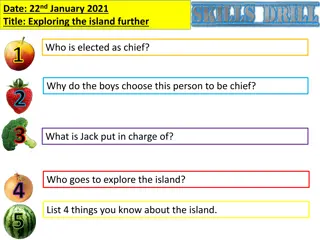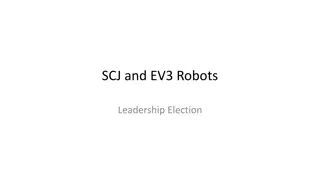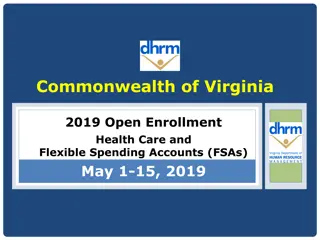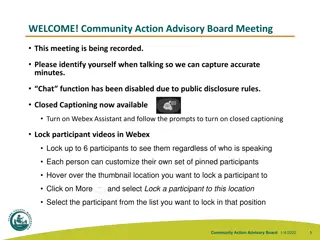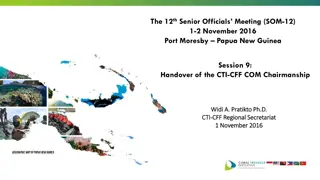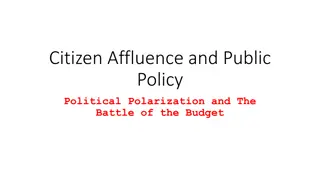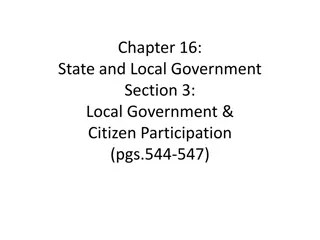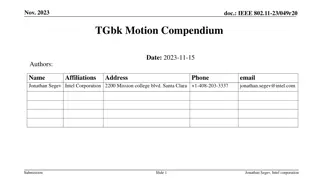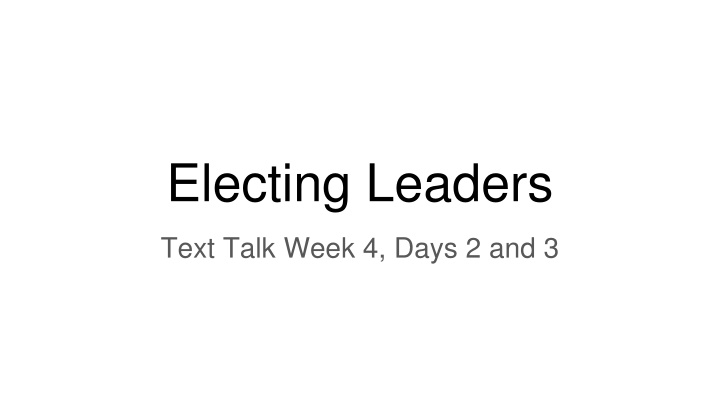
Electing Leaders
The democratic process, voting, and choosing leaders through elections. Explore the importance of civic participation and the rights and responsibilities of citizens.
Download Presentation

Please find below an Image/Link to download the presentation.
The content on the website is provided AS IS for your information and personal use only. It may not be sold, licensed, or shared on other websites without obtaining consent from the author. Download presentation by click this link. If you encounter any issues during the download, it is possible that the publisher has removed the file from their server.
E N D
Presentation Transcript
Electing Leaders Text Talk Week 4, Days 2 and 3
Slide 1 Raise your hand if you would like to have extra time outside today. Voting is a way to show what a person chooses. Sometimes we vote by raising our hands. We can vote for people, or for ideas and plans.
Slide 2 We live in a democracy. A democracy is a form of government. In a democracy, the people have power through voting. We vote for leaders whose job it is to listen to our ideas and concerns, and then to work with other leaders to make good decisions. If we like how a leader does her job, we will probably vote for her again. If not, we might choose to vote for someone else next time. One responsibility of people in democratic communities is to choose leaders.
Slide 3 People who want to become leaders through voting are called candidates. Candidates tell people about their ideas for their community and ask people to vote for them.
Slide 4 Candidates for election go out to meet people and share their ideas about helping the community. They ask for people to vote for them in the election. This is called an election campaign. Barack Obama meets people during his campaign to be the President of the United States. He served as president from 2008 to 2016.
Slide 5 Vote for one candidate X Fay Ferency Jeremy Walters Theresa Vilcapoma To choose leaders, people in the United States and all around the world hold elections. They vote for their favorite candidates by filling out ballots and putting them in special boxes.
Slide 6 On Election Days people go to special places in their neighborhoods to vote. Sometimes people wait a long time. People wait patiently, because each person s vote is important. People can also vote by sending a ballot with their choices in the mail.
Slide 7 Rights are things people should be allowed to do or have to do. People have the right to vote. Still, there are some rules about voting. For example, people have to be 18 years old to vote. Children can talk to candidates and go with their family members or other adults to vote.
Slide 8 People have to be citizens to vote. Some people are citizens because they were born in a place, like the United States. Some people become citizens by agreeing to follow laws and contribute to the community. Community members who are not citizens can learn about laws, talk to candidates, and share their ideas and wishes with other people in the community.
Slide 9 People can talk together about how they vote. But voting is private.
Slide 10 After everyone has a chance to vote, the ballots are counted. The person who gets the most votes is elected to be a leader.
Slide 11 After people vote, they might get a sticker. This can encourage other people to vote, too. When more people vote, more people help decide who our leaders are.
Slide 12 Leaders who are elected include the President of the United States, the Governors of states, members of the House of Representatives and the Senate, and mayors of cities and towns. The job of these people is to help make laws for the country, the state, and the city. They are leaders for a certain amount of time, and then people have a chance to choose new leaders. Insert a photo of relevant elected leader.
Slide 13 People might also vote to choose the captain of a team, or to decide who will take the first turn in a game. People might not use a ballot for this kind of voting. No matter how you vote, your voice is important.
Citations Slide 1: http://bcrnews.net/public-input-helps-to-build-a-better-bus-system/ Slide 2: http://democracy-democratie.ca/content.asp?document=home Slide 3: https://www.star-telegram.com/news/special-reports/databases/article196706269.html Slide 4: https://www.theatlantic.com/magazine/archive/2017/01/my-president-was-black/508793/ Slide 5: https://www.seattletimes.com/seattle-news/want-to-vote-heres-how/ Slide 6: https://www.pewtrusts.org/en/research-and-analysis/issue-briefs/2015/10/the-2014-voting-experience Slide 7: https://currentnewspapers.com/voters-bring-children-to-polls-during-midterm-elections/; https://sputniknews.com/us/201811071069573116-usa-midterms-exit-polls-wrong-track/ Slide 8: http://www.cavalierdaily.com/article/2018/07/67-individuals-become-u-s-citizens-at-56th-annual-monticello-naturalization-ceremony; https://www.mymcmedia.org/residents-grade-county-on-race-relations-at-town-hall-meeting-photos/ Slide 9: https://www.bostonglobe.com/news/politics/2018/03/09/top-elections-officials-raise-alarm-over-allowing-trump-new-authority-over-polling-places/ Slide 10: http://nymag.com/intelligencer/2013/03/nyc-still-counting-ballots-from-2012-election.html Slide 11: http://time.com/4539862/early-voting-history-first-states/ Slide 12: https://www.dotnews.com/2013/walsh-wins Slide 13: https://www.rd.com/advice/parenting/high-school-coach-wont-tell-you/

